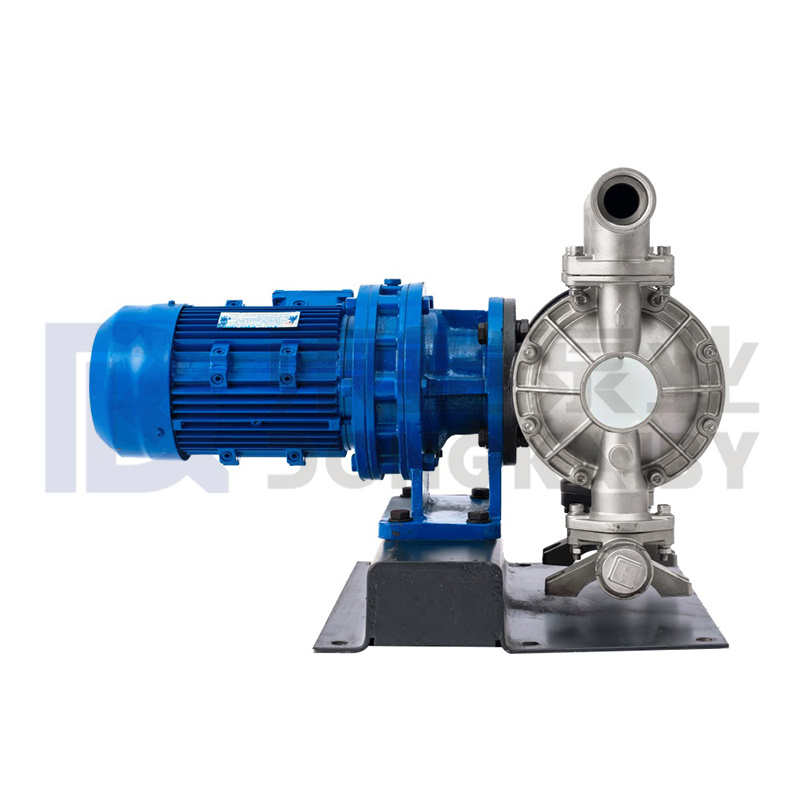- English
- Español
- Português
- русский
- Français
- 日本語
- Deutsch
- tiếng Việt
- Italiano
- Nederlands
- ภาษาไทย
- Polski
- 한국어
- Svenska
- magyar
- Malay
- বাংলা ভাষার
- Dansk
- Suomi
- हिन्दी
- Pilipino
- Türkçe
- Gaeilge
- العربية
- Indonesia
- Norsk
- تمل
- český
- ελληνικά
- український
- Javanese
- فارسی
- தமிழ்
- తెలుగు
- नेपाली
- Burmese
- български
- ລາວ
- Latine
- Қазақша
- Euskal
- Azərbaycan
- Slovenský jazyk
- Македонски
- Lietuvos
- Eesti Keel
- Română
- Slovenski
- मराठी
- Srpski језик
Diaphragm pump
2022-02-23
The diaphragm pump separates the liquid to be pumped from the movable column and the pump cylinder by means of a membrane, thereby protecting the movable column and the pump cylinder. The parts on the left side of the diaphragm that are in contact with the liquid are made of corrosion-resistant materials or coated with a layer of corrosion-resistant substances; the right side of the diaphragm is filled with water or oil.
Diaphragm pump, also known as control pump, is the main type of actuator. It changes the fluid flow with the help of power operation by receiving the control signal output by the adjustment control unit. The function of the diaphragm pump in the control process is to accept the control signal of the regulator or computer, change the flow rate of the adjusted medium, and maintain the adjusted parameters within the required range, so as to achieve the automation of the production process. If the automatic adjustment system is compared with the manual adjustment process, the detection unit is the human eye, the adjustment control unit is the human brain, then the execution unit - the diaphragm pump is the human hands and feet. To realize the adjustment and control of a certain parameter of the process, such as temperature, pressure, flow, liquid level, etc., the diaphragm pump is inseparable.

Diaphragm pump, also known as control pump, is the main type of actuator. It changes the fluid flow with the help of power operation by receiving the control signal output by the adjustment control unit. The function of the diaphragm pump in the control process is to accept the control signal of the regulator or computer, change the flow rate of the adjusted medium, and maintain the adjusted parameters within the required range, so as to achieve the automation of the production process. If the automatic adjustment system is compared with the manual adjustment process, the detection unit is the human eye, the adjustment control unit is the human brain, then the execution unit - the diaphragm pump is the human hands and feet. To realize the adjustment and control of a certain parameter of the process, such as temperature, pressure, flow, liquid level, etc., the diaphragm pump is inseparable.
There are five commonly used materials for pneumatic diaphragm pumps: plastic, aluminum alloy, cast iron, stainless steel, and Teflon. Electric diaphragm pumps are available in four of these materials: plastic, aluminum alloy, cast iron, and stainless steel. Diaphragm pump diaphragms are installed in various special occasions according to different liquid media, such as nitrile rubber, neoprene rubber, fluorine rubber, polytetrafluoroethylene, polytetrahexaethylene, etc., to pump various media to meet the needs.



